
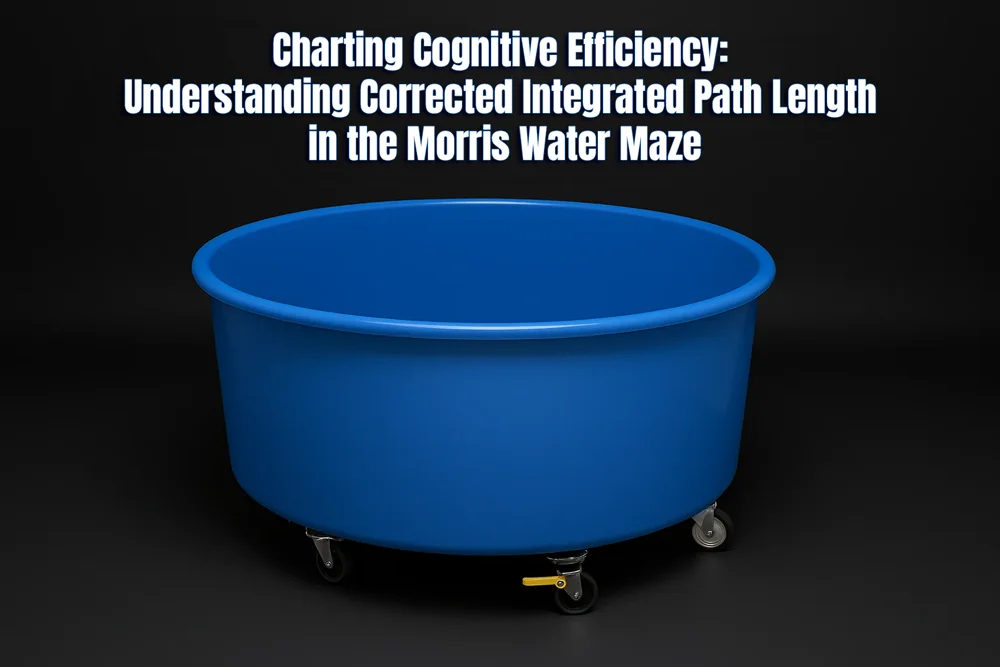
In behavioral neuroscience, the Morris Water Maze has long been a cornerstone of cognitive testing. Its simplicity—a circular pool, a hidden platform, and a swimming rodent—belies the richness of behavioral data it can produce. For decades, researchers have relied on straightforward metrics like escape latency or time spent in the target quadrant to evaluate spatial memory. These measures are useful, yes—but in an era of increasing demand for precision, reproducibility, and translational relevance, they’re no longer enough.
Cognitive function is not binary. A rodent may reach the platform, but how it does so—the trajectory, hesitation, detours, and directional shifts—matters just as much as the final outcome. That’s where Corrected Integrated Path Length (CIPL) enters the picture. It is not simply a measure of how far the animal swam, but a normalized index of navigational efficiency, capturing how direct or meandering the journey was relative to the optimal path.
This correction—factoring in start-to-goal geometry—offers a more cognitively sensitive lens than raw path length or speed. It reflects not just whether a subject has learned the platform’s location, but whether it can recall and utilize that spatial knowledge efficiently, without excessive searching or confusion. In essence, CIPL reveals how well an animal’s internal cognitive map translates into action.
In a research landscape shaped by sophisticated disease models, targeted genetic manipulations, and evolving pharmacological approaches, CIPL provides an essential layer of behavioral resolution. It enables scientists to distinguish between procedural learning and true spatial strategy, between hesitation and certainty, between passive drifting and goal-driven execution.
With tools like those developed by Conduct Science—offering high-resolution tracking, automated analysis, and customizable maze paradigms—researchers are now equipped to unlock this deeper level of insight. CIPL represents a shift in behavioral neuroscience: from measuring outcomes to understanding behavior in motion.
Corrected Integrated Path Length (CIPL) is a sophisticated metric designed to assess navigational efficiency in spatial learning tasks, particularly in the Morris Water Maze. Unlike simple measures such as raw path length or time to reach the platform, CIPL incorporates both behavioral strategy and geometric correction, giving researchers a clearer picture of how effectively a rodent is recalling and acting on spatial information.
At its core, CIPL is calculated by dividing the actual path length taken by the animal by the optimal (shortest possible) path from the start location to the platform. This ratio reflects how directly the subject navigated to its goal:

A CIPL score close to 1.0 indicates a near-direct route—suggesting strong spatial memory and efficient decision-making. Scores significantly above 1.0 reflect longer, less efficient paths, indicative of cognitive uncertainty, exploratory behavior, or spatial impairment.
The graph above demonstrates how CIPL distinguishes between cognitively intact animals and those with impairments or partial recovery. Two control animals show CIPL values just above 1.0, indicating precise, strategic navigation. In contrast, subjects from an Alzheimer’s disease (AD) model group exhibit much higher scores (2.0–2.2), representing erratic or inefficient swim paths—despite reaching the platform.
Interestingly, the drug-treated animal falls between the controls and the AD models. Its CIPL score (~1.33) suggests partial restoration of spatial efficiency, which might not be captured by latency alone but becomes evident through CIPL analysis.
Traditional metrics like latency or total distance can be confounded by variables such as swimming speed, stress, or trial layout. CIPL, by contrast, normalizes performance based on the geometric constraint of the task, allowing researchers to compare behavior across different animals, trials, and conditions.
Because it directly reflects how well an animal translates memory into movement, CIPL is especially valuable in:
By highlighting how close an animal’s behavior approximates the ideal, CIPL becomes a quantitative proxy for memory precision—a powerful tool for understanding both learning and cognitive disruption.
When an animal enters the Morris Water Maze, it is not merely swimming to a hidden platform—it is navigating a cognitive space constructed through spatial memory, attention, and internal representation of its environment. Each movement it makes reflects not just motor output, but decision-making underpinned by neural computation. This is why navigational efficiency, as captured by metrics like Corrected Integrated Path Length (CIPL), carries immense cognitive weight.
CIPL does not merely ask whether the animal reaches the goal—it demands to know how well the animal remembers where the goal is, and how precisely that memory guides its behavior. The elegance of CIPL lies in its sensitivity to strategy, not just outcome. An animal that swims in circles for 30 seconds and stumbles upon the platform may receive the same latency score as one that beelines toward it, but their cognitive processes are worlds apart. CIPL captures that difference by comparing actual swim distance to the most efficient route possible.
This distinction is crucial because learning is not binary. It unfolds in gradients—of precision, speed, certainty, and adaptability. CIPL tracks those gradients with granularity. As learning consolidates, a healthy animal’s CIPL typically decreases across sessions, reflecting a shift from exploratory to goal-directed behavior. The swim path tightens, becomes more direct, and ultimately reflects an internalized map of the environment—precisely the kind of spatial mapping attributed to hippocampal processing (O’Keefe & Nadel, 1978).
Moreover, navigational efficiency encodes confidence. An animal that knows exactly where the platform is will swim there without hesitation, taking the shortest path permitted by the pool’s geometry. In contrast, uncertainty breeds inefficiency—manifested as searching, detouring, or thigmotaxis. Thus, CIPL functions as a metric of cognitive certainty, reflecting how confidently the animal is acting on what it knows.
This cognitive dimension is especially valuable in identifying subtle phenotypes or early-stage impairments. In Alzheimer’s disease models, for example, animals may retain gross motor function and display adequate escape latencies, yet still demonstrate high CIPL values—revealing disorganized navigation masked by endpoint success. Likewise, animals exposed to chronic stress or pharmacological agents may show behavioral hesitation or cognitive inflexibility, which surfaces more clearly through efficiency-based metrics than through time alone.
Navigational efficiency also provides insight into strategy selection. Some animals may learn the location of the platform but rely on inefficient, habitual paths to get there. Others may employ spatial reasoning from the outset. CIPL, especially when combined with heat maps and trajectory visualizations, can distinguish between procedural solutions and allocentric navigation, allowing researchers to parse out which cognitive systems are being engaged—or avoided.
In studies of learning and memory, we must remember that behavior is not just about destination—it’s about the journey, and what that journey reveals about the brain. Corrected Integrated Path Length gives researchers the ability to quantify that journey with accuracy, sensitivity, and meaning. It transforms a swim path into a neural narrative, one that tells us not just that learning has occurred, but how deeply and effectively it has taken root.
The real power of Corrected Integrated Path Length (CIPL) emerges when applied to experimental models of brain disease and behavior. As neuroscience moves beyond basic latency and quadrant analysis, CIPL has become a precision metric for detecting and interpreting cognitive decline, compensatory strategies, and therapeutic effects in both established and emerging preclinical models. In this way, it bridges the gap between complex behavior and quantifiable neurobiological dysfunction.
Rodent models of Alzheimer’s disease (AD)—such as APP/PS1 or 3xTg mice—provide an exemplary case for the utility of CIPL. These animals often show subtle cognitive impairments early in disease progression, long before traditional measures like escape latency begin to deviate. CIPL is uniquely sensitive to these changes. Although AD model rodents may eventually reach the hidden platform, their swim paths are frequently disorganized and inefficient, leading to inflated CIPL scores even when latency remains comparable to controls (Bromley-Brits et al., 2011).
As amyloid burden increases or tau pathology spreads, the spatial disorientation becomes more pronounced, with animals showing increased deviation from the optimal path and engaging in excessive looping or perimeter scanning. CIPL captures this degradation in spatial strategy with far greater sensitivity than latency, making it a leading indicator of hippocampal dysfunction—and a valuable readout for interventions aimed at preserving or restoring cognitive function.
In models of traumatic brain injury (TBI) or focal ischemia, rodents often retain motor capabilities but suffer from impaired spatial integration and cue processing. This mismatch between movement ability and spatial awareness can mask cognitive deficits in conventional assessments. CIPL exposes this mismatch by highlighting inefficient navigation, circuitous paths, and reduced goal-directedness—even when the animal successfully reaches the platform.
Following cortical impact or middle cerebral artery occlusion (MCAO), CIPL values often remain elevated despite training, reflecting disrupted input from spatial processing centers such as the hippocampus and parietal cortex. In recovery paradigms, a reduction in CIPL over time may serve as a functional biomarker of neural reorganization or therapeutic efficacy.
CIPL also finds relevance in models of psychiatric conditions such as schizophrenia, anxiety, and autism spectrum disorder (ASD). In these paradigms, animals may exhibit hyperactivity, behavioral inflexibility, or impulsive search patterns, all of which manifest as higher CIPL scores. While latency or platform crossings might not fully capture the behavioral noise or erratic navigation, CIPL quantifies these abnormalities in strategy with high resolution.
For instance, mice with NMDA receptor hypofunction—a model for schizophrenia—may reach the platform rapidly but through erratic, fragmented paths, indicating disrupted executive function and planning. Similarly, in ASD models like Shank3 or BTBR T+tf/J mice, repetitive swimming patterns and impaired spatial flexibility result in increased path lengths and inconsistent use of spatial cues. CIPL enables these phenotypes to be quantified and compared across genotypes, age groups, or drug treatments.
Because of its sensitivity to strategy and memory retrieval, CIPL is widely applicable in drug discovery pipelines. Cognitive enhancers—ranging from cholinesterase inhibitors to nootropics and glutamatergic modulators—can be assessed not just by whether they help the animal escape faster, but whether they help it swim smarter. A decrease in CIPL across days of testing is a powerful indicator of improved cognitive mapping and strategic navigation.
Moreover, behavioral interventions such as environmental enrichment, physical exercise, or optogenetic modulation of memory circuits can also be evaluated using CIPL. These interventions often enhance synaptic plasticity and spatial learning, which are reflected not only in platform acquisition but in more direct, streamlined swim paths—easily captured by this metric.
Corrected Integrated Path Length doesn’t just evaluate outcomes—it evaluates the efficiency and coherence of cognition itself. Across neurological and psychiatric models, it serves as both a diagnostic marker and a dynamic indicator of learning curve progression, therapeutic responsiveness, and strategy refinement.
By embedding CIPL into experimental design, researchers gain access to a layer of behavioral meaning that’s invisible to latency or distance alone. It reveals how disease and therapy shape not only the brain’s ability to act—but its ability to plan, adapt, and execute with purpose.
The power of a behavioral metric lies not just in its theoretical strength, but in its practical implementation. Corrected Integrated Path Length (CIPL), while conceptually elegant, only reaches its full potential when supported by tools capable of capturing and computing the complex spatial data required for its analysis. Today, with the advent of automated tracking systems, customizable virtual zones, and high-throughput behavioral analytics, CIPL is no longer reserved for specialist labs—it is becoming a mainstream tool for advanced cognitive phenotyping.
To quantify CIPL, researchers must first capture the actual path length an animal travels during a Morris Water Maze trial. This involves recording position coordinates—typically through a video-tracking system equipped with high-frame-rate cameras—from the moment the animal is released until it reaches the platform.
Next, the shortest linear distance between the start point and the platform (the “optimal path”) is calculated. This value is purely geometric—if the animal were to swim in a perfectly straight line, this is the distance it would travel. The CIPL score is then derived as a ratio:

This calculation, while simple in concept, requires precise spatial data and consistency in trial definition. Advanced tracking software automates this entire process, providing real-time calculations and storing CIPL scores alongside other behavioral metrics such as escape latency, path efficiency, and time in target quadrants.
Modern behavioral analysis platforms allow users to digitally define spatial zones, including virtual corridors, annuli, quadrants, and proximity zones. This flexibility is critical in CIPL analysis, as it ensures that each trial’s optimal path is recalculated based on the start-point, rather than relying on one-size-fits-all metrics.
Additionally, heat maps and trajectory overlays make it possible to visually compare an animal’s path across trials or between experimental groups. For example, a wild-type mouse might display increasingly direct swim paths over time, while a cognitively impaired mouse continues to take roundabout or inconsistent routes. These visualizations pair intuitively with CIPL scores, allowing researchers to link data with observable strategy.
Because CIPL can be computed for every trial in a multi-day experiment, it offers a rich opportunity to examine learning curves. As a rodent acquires spatial memory, its CIPL should progressively decrease, reflecting more confident and directed navigation. In disease models or intervention studies, comparing CIPL across days reveals not only whether learning occurs, but how quickly and efficiently it is consolidated.
This temporal resolution provides a powerful means of evaluating treatment efficacy or genetic modulation of memory function. For instance, a pharmacological agent might reduce escape latency modestly, but show a pronounced effect on CIPL—indicating that the animal is learning to navigate more efficiently, even if it isn’t reaching the platform significantly faster.
Another critical advantage of modern tools is standardization and exportability. Many behavioral analysis platforms allow for automated report generation and data export in universal formats (e.g., CSV, Excel, JSON), enabling seamless integration with statistical software and facilitating cross-laboratory comparisons.
This standardization supports open science initiatives, allowing researchers to compare results across institutions, replicate findings, and meta-analyze large datasets. When CIPL is implemented as a shared metric with consistent algorithms, it becomes a powerful tool for building reproducible, multi-site studies—especially valuable in translational neuroscience where consistency across models and methodologies is paramount.
Today’s tracking tools also support batch analysis, making CIPL feasible in high-throughput experimental designs. Whether testing large drug libraries or characterizing dozens of transgenic lines, labs can automate CIPL scoring across hundreds of trials with minimal human intervention. This scalability transforms CIPL from a niche endpoint into a central metric for data-rich behavioral neuroscience.
In short, the once-technical challenge of measuring Corrected Integrated Path Length has become a streamlined, intuitive, and highly visual process. With the right tools in place, researchers can not only calculate CIPL accurately, but contextualize it—linking it with strategy, time, spatial preference, and memory precision.
By combining precision instrumentation, real-time data processing, and intelligent behavioral modeling, today’s technology doesn’t just quantify rodent behavior—it reveals the cognitive strategies behind it. And in doing so, it empowers researchers to answer not only what an animal did, but how and why it did it.
In the complex architecture of spatial learning and memory, Corrected Integrated Path Length (CIPL) offers a rare combination of precision, sensitivity, and conceptual elegance. It does not merely describe if a goal is reached, but how efficiently and how confidently it is pursued. In doing so, CIPL transcends traditional metrics like escape latency or quadrant time, serving as a window into the very process of learning, memory recall, and cognitive strategy.
Across models of Alzheimer’s disease, traumatic brain injury, schizophrenia, and autism spectrum disorder, CIPL has proven its utility in detecting early cognitive dysfunction—often long before gross impairments appear. By anchoring performance to an optimal path, this measure quantifies the quality of spatial decision-making, revealing not just the outcome but the animal’s navigational intent.
CIPL also holds significant value in evaluating treatment effects. Whether testing novel compounds, gene therapies, environmental enrichment, or optogenetic stimulation, researchers can use changes in CIPL to monitor cognitive restoration, not just behavioral compensation. A reduction in path inefficiency over time is not just a sign of learning—it’s evidence of neural recalibration, goal alignment, and cognitive clarity.
Moreover, the integration of automated tracking systems, custom zone mapping, and visual analytics has made CIPL analysis more accessible and reproducible than ever before. It is scalable for high-throughput studies, exportable for multi-lab collaboration, and intuitive enough to pair numerical insight with visual confirmation. The result is a metric that aligns with modern scientific standards for open, rigorous, and replicable behavioral research.
Ultimately, CIPL elevates the Morris Water Maze from a test of spatial location to a true assay of cognitive execution. It aligns behavior with neurobiology, efficiency with insight, and path with purpose. For researchers aiming to decode the intricacies of learning, memory, and navigation, CIPL is not just a valuable tool—it is a necessary one.
As neuroscience continues its shift toward multidimensional, high-resolution behavioral profiling, metrics like CIPL will define the future—not only of how we study behavior, but of how we understand the brain itself.
Written by researchers, for researchers — powered by Conduct Science.


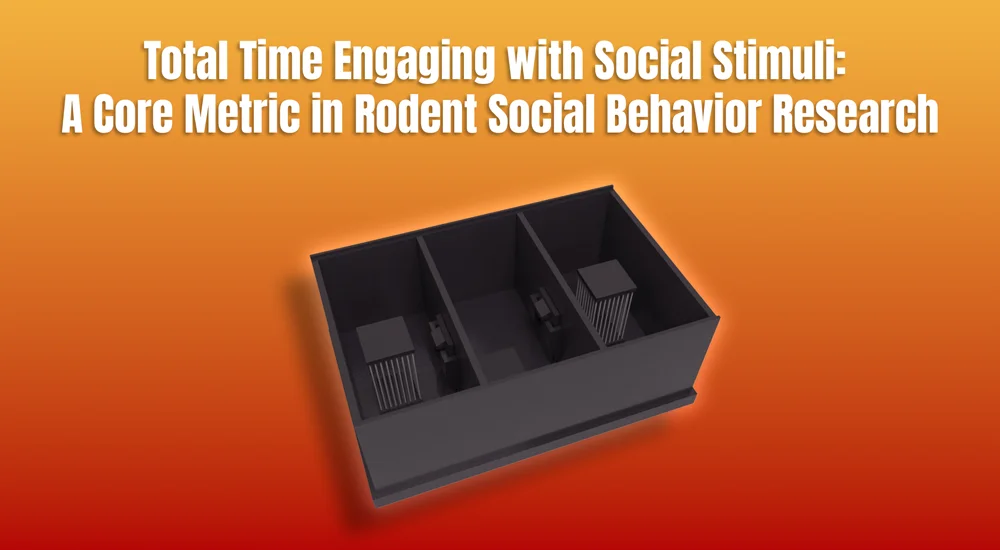
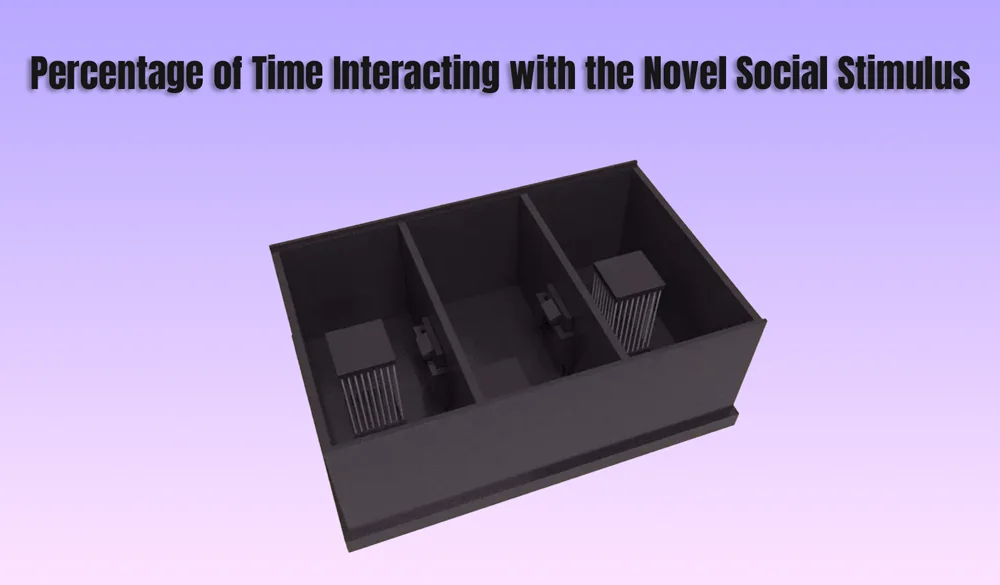
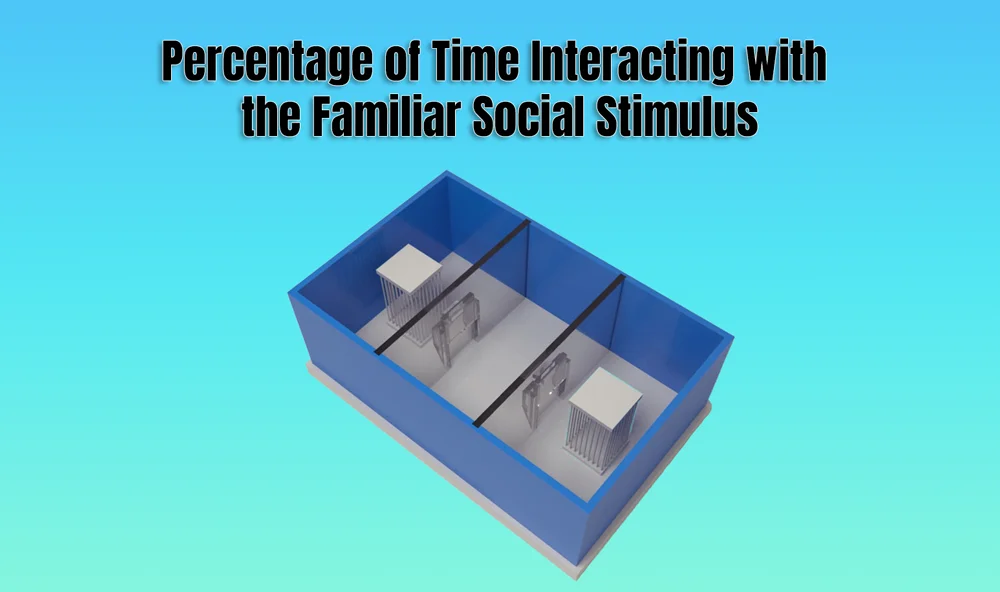

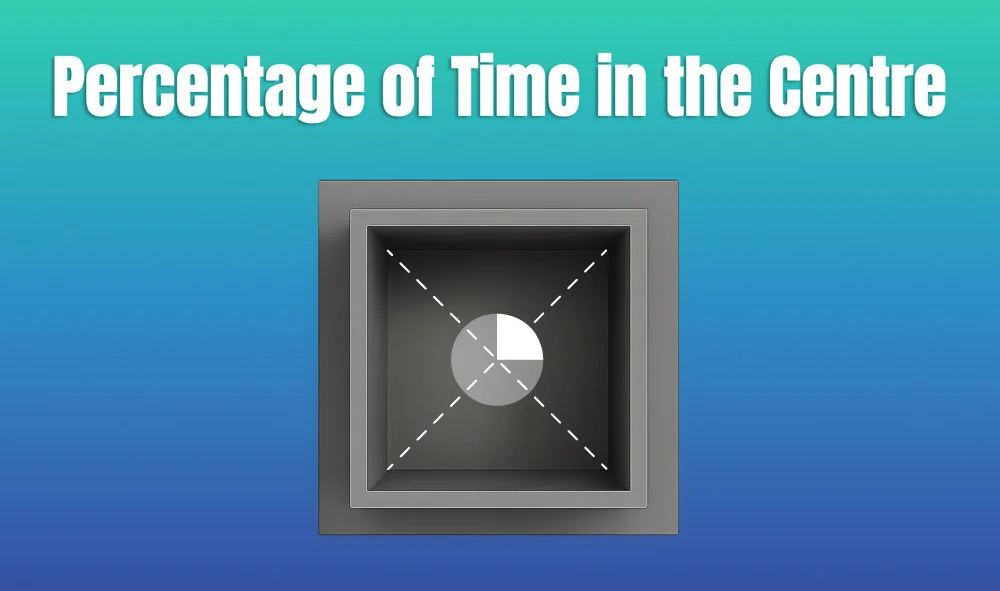


Dr Louise Corscadden acts as Conduct Science’s Director of Science and Development and Academic Technology Transfer. Her background is in genetics, microbiology, neuroscience, and climate chemistry.
Monday – Friday
9 AM – 5 PM EST
DISCLAIMER: ConductScience and affiliate products are NOT designed for human consumption, testing, or clinical utilization. They are designed for pre-clinical utilization only. Customers purchasing apparatus for the purposes of scientific research or veterinary care affirm adherence to applicable regulatory bodies for the country in which their research or care is conducted.